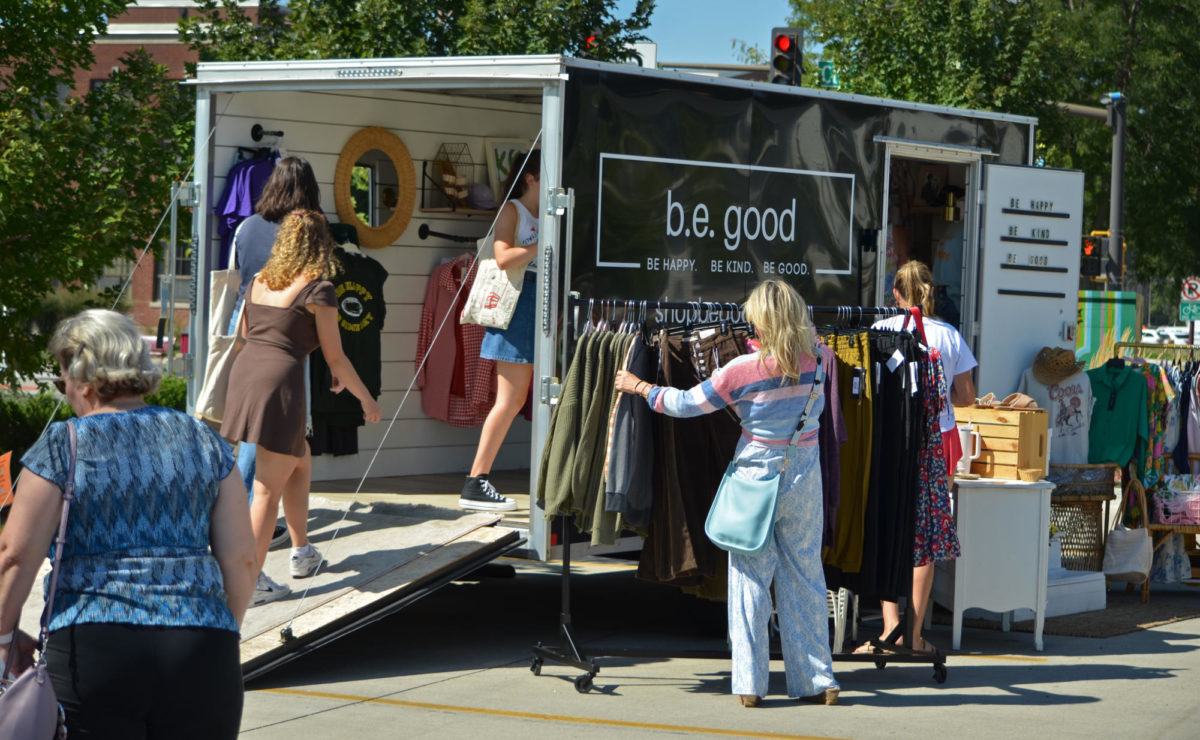PRELL: High fashion replaces subcultures’ authenitic intentions, creditibility
January 21, 2009
I wander into the faux-oak decorated room. My pupils widen to drink it all in. The dark blue walls seem to engulf me, and I can only wonder silently:
Is this hell?
Abercrombie, Aeropostale, American Eagle, Urban Outfitters, The Gap and more. They all sit on the cusp of fashion, providing the newest styles to consumers at middle-class prices. Or maybe they’re a bit costlier than that.
Many of these companies have been accused of exploiting workers, exporting labor to sweatshops and more. Unfortunately, with a PR machine run by millions upon millions of dollars and airtight company policy, it’s almost impossible to find out if such claims are really true.
And even if they were, what would come of them? An announcement by the company that things will change followed by the screams and shrieks of infuriated pubescents? “How dare you,” they’ll say as they defend to the death their right to be hip, even to the point of willful ignorance. Several companies, such as The Gap, Wal-Mart, Nike and others are already known users of sweatshop labor, yet clearly this doesn’t stop runway fashionistas from perusing their shelves. In 2007, Wal-Mart alone had a net income of $12.73 billion, according to the U.S. Securities and Exchange Commission.
Turning a blind eye is sadly common in the realm of fashion. For your consideration: the keffiyeh. One of the newest fashion trends to hit the market, the keffiyeh is a checkered scarf originally worn in the Middle East. It has since been adopted into the West by protesters who wished to show solidarity with the Palestinians. Since that time, been modified and de-fanged of any potential subculture prowess by adding slightly more contemporary patterns onto the fabric and the new label we’ve appropriated to them.
They’re not “keffiyehs,” they’re “mufflers” now.
The skinny jeans and v-neck T-shirts for boys have also seen a despairingly public fall into meaninglessness. Men who wore clothing such as this had a cause once. In a culture perpetuating rigid stereotypes of masculinity, femininity and heterosexuality, they crossed lines and defied boundaries. Now they’re considered trend-following metrosexuals, hipsters or “emo,” according to one student.
Rather than change perceptions of gender in a meaningful way, this quasi-cross-dressing trend has had its message distorted beyond recognition. Instead of changing society’s ideas of what it means to be masculine and what it means to be feminine, people have lingered onto the absurd notion that any man with the slightest of feminine traits must be gay.
So what happens when the idea of men wearing traditionally feminine clothing mixes with this notion of an orientation dichotomy? People start thinking it’s cool to be gay, and being gay is merely in fashion right now.
High fashion has taken these subcultures and replaced their authentic causes, their authentic credibility with the idea of “hip rebellion,” a phrase that practically defines oxymoron.
It’s the ultimate irony, and it has penetrated every crevice of cool. Lyrics blast through speakers that scream of fighting against oppression and resisting undue authority. I feel motivation coursing through my body — a vibrant energy that stirs me. And then I realize what I’m listening to.
The song is number seven in the Top 40 countdown.
I see the artist’s interviews and I can’t help but shudder while teens gush. “He’s so real,” says the perky blonde standing in line next to me, pointing out the cover of People magazine to her equally bubbly friend. She admires — without the slightest trace of satire in her voice — the millionaire Grammy-winner’s “street cred.” Unfortunately for me, the taste of fully realizing these contradictory images and messages in all of their airbrushed “glory” is bitter.
In this society, in this modern age, we desperately search for and cling to our causes, even when that cause is nothing more than shallow vanity with a dash of arrogant, self-righteous defiance.
We show our individuality by purchasing mass-produced flash tattoos of Chinese characters. We show our uniqueness with apathy and heroin-like addiction to our electronics. If there isn’t a Facebook page devoted to it, it isn’t worth our time. We puff our cigarette smoke into the air and imagine that each wisp represents a middle finger raised high and mightily against the establishment. We show our non-conformity by buying the latest skinny jeans from of American Eagle, Aeropostale and their ilk.
Consumption is the motto of our generation. Not peace and love. Not rebellion against authority. Not gender reconstruction. Not meaning.
We feel as though we’re challenging status quo or being cutting edge when in fact we have become vampires and zombies, shuffling through our lives with nothing left within us but the drive to consume. And worst of all, we have imparted onto ourselves the staggering reality of sterility.
We have no creative spirit. We don’t even have any self-awareness. Women sway back and forth in dance clubs, lustfully intoxicated by hip-hop that degrades them to submissive sexpots, all the while admiring the defiant attitude of the singer himself.
We consume purpose rather than create it, and this turbulent attitude is leading us to a dead end we refuse to see.
It’s time we start something.
Sophie Prell is a junior in pre-journalism and mass communication from Alta.
















